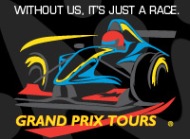Notes on Kimi’s driving – 2012
It was interesting to see LotusF1 trying different steering rack settings on Kimi Raikkonen’s car on Friday in Malaysia. Technical Director, James Allison, said in a team press release before the race that “Kimi likes to drive with quite a light steering wheel, but one which also has great precision. Our baseline rack is precise, but it’s not light enough for Kimi’s driving style. Our challenge is to produce a hydraulic rack that is more powerful than the current unit, but which sacrifices none of its precision. We have not got there yet, but we will do.”
I mention this because (a) it is quite unusual to have relatively detailed information like this from a current F1 team and (b) because it gives us a little more insight into what comprises the God-given talent that is Kimi Raikkonen.
It’s no surprise that Kimi is finding the initial steering set-up of the E20 to be on the “heavy” side. He is a fingertip driver if ever there was one – and I don’t think you can say that about the 2011 LotusRenault drivers, Vitaly Petrov or Bruno Senna, (although Nick Heidfeld certainly tends towards Kimi’s end of the spectrum) . “Weight” , however, in my view tells just part of the story. Of course Kimi is as fit as the rest of them – certainly in his upper body muscular strength – so I don’t believe that this is a question of Kimi not being able to handle “heavy” steering. On the contrary: his drive in Melbourne, fresh from his two-year lay-off, shows how fit he is already. No, I think this is a question of how Kimi feels the surface of the road. With heavy steering, the shoulders and upper arms come more into play; with lighter steering – providing it is “precise” (as James puts it) – the feel flows much more through the lower arms and hands. Kimi’s initial steering movements are always relatively slow compared with those of many F1 drivers. I remember watching him from overhead in the McLaren at La Rascasse at Monaco in 2006. Compared with his team-mate, Juan Pablo Montoya, Kimi was approximately two metres later with his mid-corner rotation, which is to say that in the initial phase of the corner Kimi had perhaps five degrees of steering lock where Juan had at least 15 degrees. Juan was on the power earlier – but the early power application led to oversteer bobbles on exit. Kimi was travelling faster in the early stage, had a lower minimum speed while he rotated car the car, but a much straighter, flatter exit that he “guided” with easy accuracy.
Criticial to Kimi, then, is his ability to feel the car in that early stage of the corner – to be able to manipulate the car, as if on aut0-pilot, as he floats in towards his minimum speed (rotation) point. The car is losing speed; slip angles are coming into play; and Kimi is managing the forces via brake pedal pressure release and increased steering load. It is an infinitely variable thing from corner to corner, lap to lap. There is no “turn-in” point or fixed apex. The track surface is constantly changing; so is the fuel load, so are the tyres – and so are the precise points, down to a centimetre, at which Kimi brakes and begins his initial, gentle movements.
It looks as though Kimi has found the early-season steering of the E20 to be heavy enough to be able to dampen his feel for that early corner phase. There were fewer messages travelling to his lower arms and hands in the tests and in Melbourne; the emphasis was on musclepower – the enemy of the senses. Kimi, reduced to that, was basically just another F1 driver.
The mechanical job for the team, of course, is to be able to give Kimi the sort of power assistance he needs without taking away any of the feel – and it was with this that they played on Friday at Sepang. I suspect this is a similar situation to Jarno Trulli’s at Team Lotus last year. Jarno’s initial corner movements are very similar to Kimi’s, although in my view Kimi is a much more creative driver than Jarno when it comes to managing, say, understeer.
Of course, this isn’t the only way to drive. What I love about F1 is that every driver is different. For every Kimi, there is a Fernando Alonso.
I haven’t yet seen enough of the re-invented Romain Grosjean from the right vantage points to describe accurately how he uses the pedals and the steering. Early impressions put him pretty near Sebastian Vettel (in terms of style): he has slightly more (and faster) initial steering inputs that Kimi but a lovely feel for eliminating load from the car; an oversteer driver he is not.














Pingback: Notes on Kimi’s driving – 2012 « peterwindsor.com « F1Enigma's Insider Notebook
Peter, I love this level of detail in describing the different drivers styles. I would really appreciate more of this comparing the main styles being used today. Keep up the great work.
Great article Mr. Windsor. Thanks for providing a peek into the enigma that is Kimi Raikkonen.
I see… I now understand better the steering complexity when it comes to cornering. Thanks Peter! 🙂 Hopefully the team and Kimi can get it right asap…
I saw Kimi’s Onboard at Malaysia’s 2’nd practice,. your spot on. Especially at the final tight left hand corner onto the long pit straight. I still wish the cameramen would occasionally have static shots at a few important corners on a circuit to see these aspects your pointing out first hand. Great article Peter !
In-depth study…great observation….thumbs up!!
Many thanks – glad you like it. Shame Kimi has a penalty after a gearbox change…
Best regards
Peter Peter Windsor Host, The Flying Lap (http://theflyinglap.com) Website: http://peterwindsor.com Twitter: @peterdwindsor Cell: +44 7795 358443 Email: peter@peterwindsor.com
> Confidentiality Notice: > This E-mail is the property of Peter Windsor (which, for this purpose, includes his associates). > It is confidential and intended for the use of the addressee or with their permission. > Use by anyone else for any purpose is prohibited. > If you are not the addressee, you should not disclose, copy, distribute, take any action > or rely on this E-mail and should notify Mr Windsor immediately by return E-mail to this E-mail address. >
Yeah, it’s these little subtleties that make F1 so unique. Jarno was the king of the steering theme last year, but in 2012 it’s obviously Kimi. The team lost some valuable time with that 1st Barcelona test mishap, at least their current level shows that all those years of experience in the sport do count for something. You can see how hard it is for the new teams without a proper structure in place to find a decent car balance for their drivers.
2006 Monaco was quite a memorable race, I liked that one: DC in Superman suit and Juan’s last podium in F1, if I’m not mistaken. Monaco already looks good on TV, must be really nice in the flesh.
Pingback: Driver Driving Style’s | Literal F1
Hello Peter, I was reading here and there that power steering has been always a sensitive matter to Kimi in every team he has been. Do you have such info, too?
Not as such, although, given the choice, I can’t imagine that he’s ever been a fan of heavy steering or for over-light, insensitive steering (for the reasons stated here). He just wants to feel the surface of the road. Sounds simple – but it’s very hard to produce that.
This observation is spot on and explains in some ways why Kimi had such a hard time when driving a Rally car over gravel or other rough surfaces. Kimi is used smooth surfaces and has learned his trade in such ways to take the immediate tire feedback into his responses and driving input, and usually the results are stunning. I don’t believe Lotus or former Renault ever employed a driver like Kimi during the past decade which is good for the team and the sport. Receiving feedback from someone like him makes Kimi a real asset to help to show some of the car’s flaws.
Today, he’ll be able to drive a F1 car over a cigarette butt and tell you if it was a Camel with or without Filter. If it comes to smoothness behind the wheel of a Formula car then I would put only one driver ahead of Kimi, and that is Jenson Button. So for the remainder of the season we should expect great things to come from Kimi, yes, he is truly a character; but exactly that makes him more likeable besides his awesome driving skills.
Could you please describe Kimi’s style and Michael Schumacher’s one? Because I have heard that they are much similar.
Dear Mr. Windsor, how do you compare prime Kimi to three best drivers on the grid now, namely Max, Charles, and Lewis? How many of the four boxes does a prime Kimi Raikkonen take? I was watching some onboard clips of Kimi from his McLaren days and it seems to me that he was doing everything you described in your Max video not long ago. Particularly, I was watching his qualifying laps at Hungaroring in 2005 and at Nurburgring in 2003. At the last corner at Hungaroring, he turned in very early and he was almost in the middle of the track when he did so, which presumably makes the corner short. Also, a quick question on your claim of “short corner” in your Max video. When you say great drivers tend to make the corner short, do you mean geometrically or spend less time turning the car in the corner? Look forward to your reply. Thank you!!!